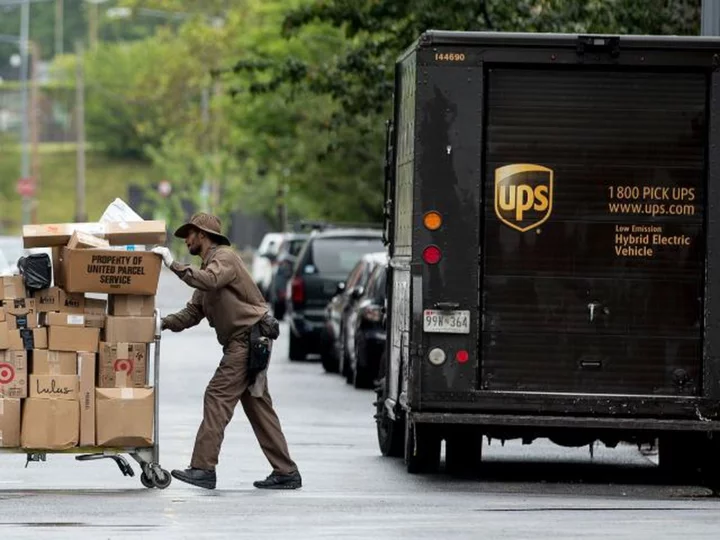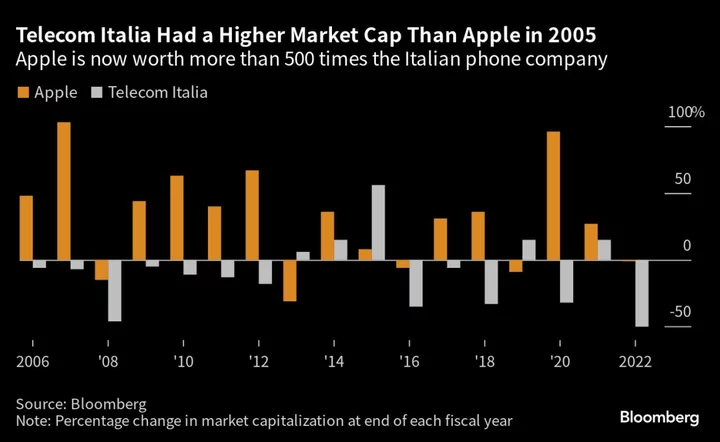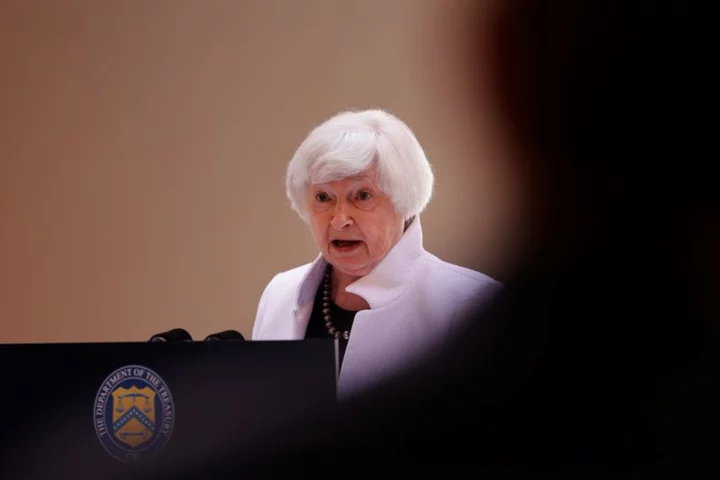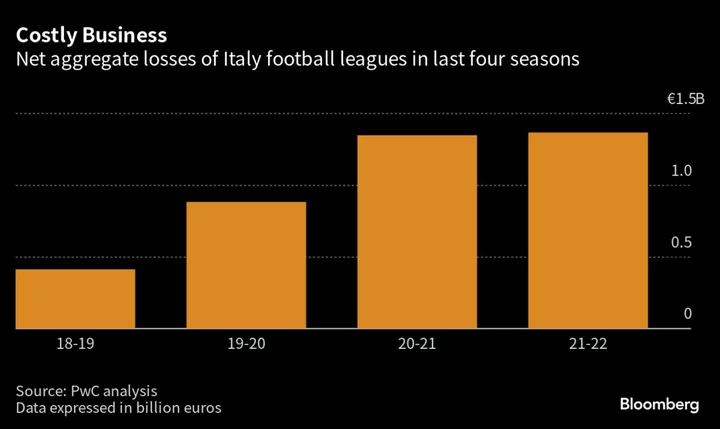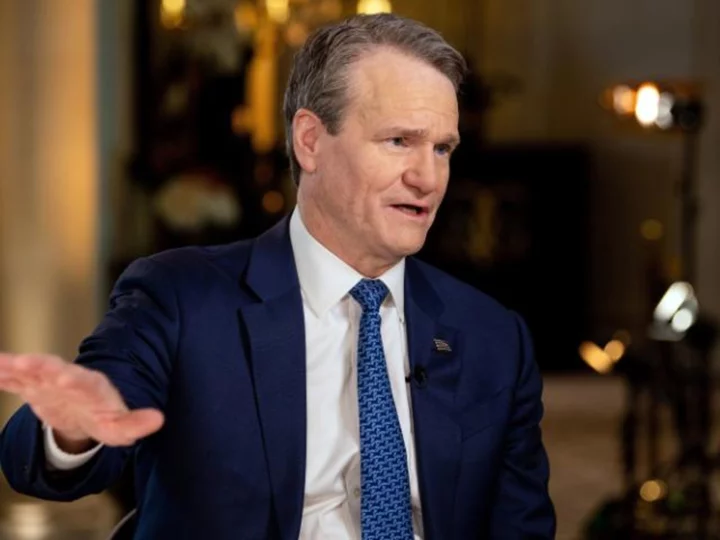UPS isn't just another large shipping company. It carries 6% of America's gross domestic product in its trucks. It also plays a central role in the smooth movement of goods the economy depends upon, feeding supply chains that are only recently recovering from disruptions that drove that drove up prices in the past couple years.
That's why there is so much at stake in contract negotiations between UPS and the Teamsters union. Without a deal, 340,000 Teamsters are preparing to go on strike at the nation's largest trucking company starting August 1.
"This strike is a serious threat to the US economy," said Patrick Anderson, president of Anderson Economic Group, a Michigan think tank with expertise in the economic costs of strikes. "The sheer scale of the number of people and the breath of impact across the country is very serious. And the degree to which us economy has become dependent on fast delivery of small items that can be carried by UPS hasn't really been tested."
The years since the start of the pandemic have been very good financially for UPS, as the surge in online shopping lifted it to a record adjusted operating profit of $13.9 billion, last year, up from $7.4 billion in 2018, the year the last contract was negotiated.
It's expanded to six-day-a-week delivery. It had 443,000 US employees as of the end of last year, up 69,000 from five years earlier heading into the last contract talks.
But these years since the pandemic have also been a stark lesson as to what happens to the US economy when the supply chains don't work as smoothly as hoped, when problems at US ports and a shortage of truck divers and shipping containers caused delays and higher prices for many goods.
A UPS strike could spread disruptions like that across much of the country.
Negotiations between Teamsters and UPS
The company and the union agree that a lot of progress has been made in negotiations so far, but they broke off this week with both sides claiming the other walked away from the table. UPS said the Teamsters' actions "creates significant unease among employees and customers and threatens to disrupt the US economy."
"Only our non-union competitors benefit from the Teamsters' actions," said the company.
Teamster President Sean O'Brien in an interview on CNN Thursday said he would not have thought a strike was likely until the talks broke off early Wednesday morning. He said UPS can afford the demands that the union is making at the bargaining table, including raising the pay of part-time workers who sort packages and load trucks.
"Those trucks don't go out unless they are loaded," he said. "Our part timers, the unsung heroes, they are working for poverty wages and we need to drive up the starting rates of pay and reward those people that made supply chain solutions happen." While O'Brien acknowledged drivers can make $93,000 a year at UPS, part-time package handlers can make about $15.50 an hour.
UPS carried an average of 20.8 million US packages a day through 2022. While that number is down slightly so far this year, it's nearly double the 11.4 billion it carried, on average, throughout 1998, the first year after the last strike.
"Shipping is important to many small business owners," said Holly Wade, executive director of research for for the National Federation of Independent Business. "They rely on it to get their inventories, shipping to their customers. Their ability to adjust and find alternatives, it's going to be challenging."
The economy has changed radically in the 26 years since the last UPS strike in 1997. Most Americans, if they logged on at home at all, they likely did so on a dial-up modem. Few did any significant shopping online. Amazon was a still a struggling start-up with only $147 million in net sales. Its net revenue last year of $469 billion was more than 3,000 times greater.
UPS alternatives for shippers
There are more alternatives for shippers today than there were in 1997, said Satish Jindel, president of ShipMatrix, a software provider that works with parcel shippers. FedEx has established its own lower-cost ground service that it didn't have in 1997, and the US Postal Service has moved away from traditional first class letters, which have been in decline for years, and focused on package delivery. Amazon has also started its own delivery service.
Amazon did not respond to questions about its plans. FedEx issued an advisory Thursday that there will be limits to how many shipments it will accept from businesses if a strike starts at UPS, and the limit will be based on the volume the customer shipped during the week July 17 to July 21 period.
"In the event of an industry disruption, FedEx's priority is protecting capacity and service for existing customers," said a memo that FedEx sent to its sales force Thursday. "Over the last six months, we have been actively communicating with current and potential customers and urging them to transition business while capacity is available. Time is now running out."
FedEx's memo also said its retail locations "will only accept drop-off volume that can be processed and stored until the next pickup to avoid overflow."
The Postal Service said it will accept all packages tendered to it, as long as they are within normal weight and size limits.
But even if all packages get into the system, there's a good chance that some packages will not be delivered in a timely manner.
"FedEx, USPS, and Amazon have made large operational investments to efficiently handle growth. Coupled with our current situation of weaker e-commerce demand, they will be able to absorb some (not all) UPS volume," wrote Mike Eisner, vice president of sales at e2open, a supply chain software firm, in a note this week.
UPS will try to deliver its highest priority, highest priced packages itself using nonunion employees, rather than shutting down completely as it did in 1997, according to Jindel. But that is just a fraction of its normal volume. UPS won't comment on its contingency plans, saying it is focused on reaching a deal that would avoid a strike.
Jindel expects most packages will end up being delivered by one service or another, although it won't be a smooth operation.
"There will be some pain. No doubt about it," he said. "On-time performance will slide down. And it will result in higher cost to use other carriers."
August is not a peak season for shippers. But the back to school shopping season is an important one for retailers. And there are many businesses, everything from manufacturers to professional offices, that depend on regular deliveries by UPS drivers.
Some experts are not as optimistic as Jindel or Eisner about the ability to find a home for UPS's normal 20 million daily packages.
"You'll end up having shipments stuck on the loading docks, stacking up," said Tommy Storch, senior manager with Insight Sourcing Group, a supply chain consulting firm. "What's worse is, it's going to compound. If you send out half your packages the first day, the next day you'll still have them there, and you'll only be able to send out half your packages again." He said even if a strike lasts only a few days, it'll take a while for everything to get back to normal.
And he said businesses are going to be disappointed when they try to find alternatives.
"FedEx is going to prioritize people who have been loyal to them," Storch said. He said even with other services trying to pick up the slack, the typical consumer will "notice the effect of the strike pretty quickly."

